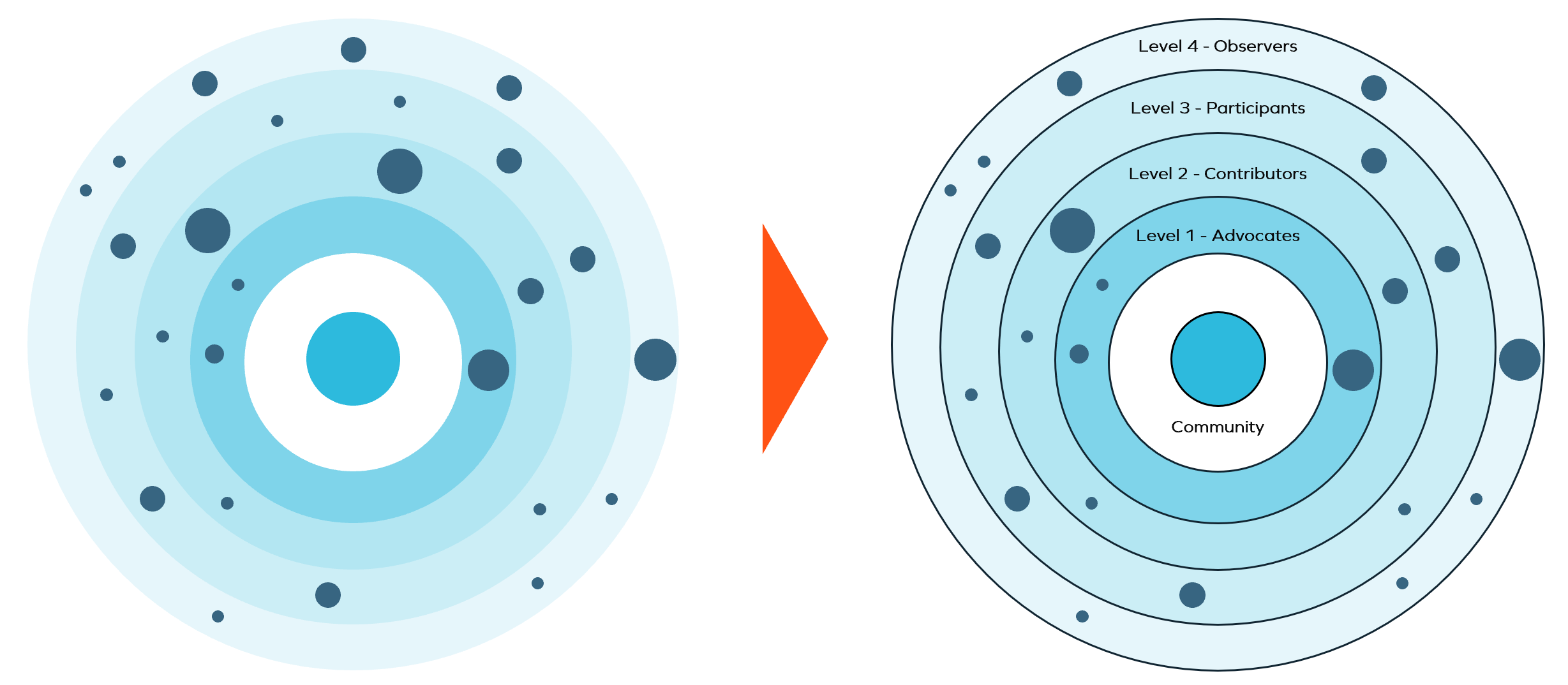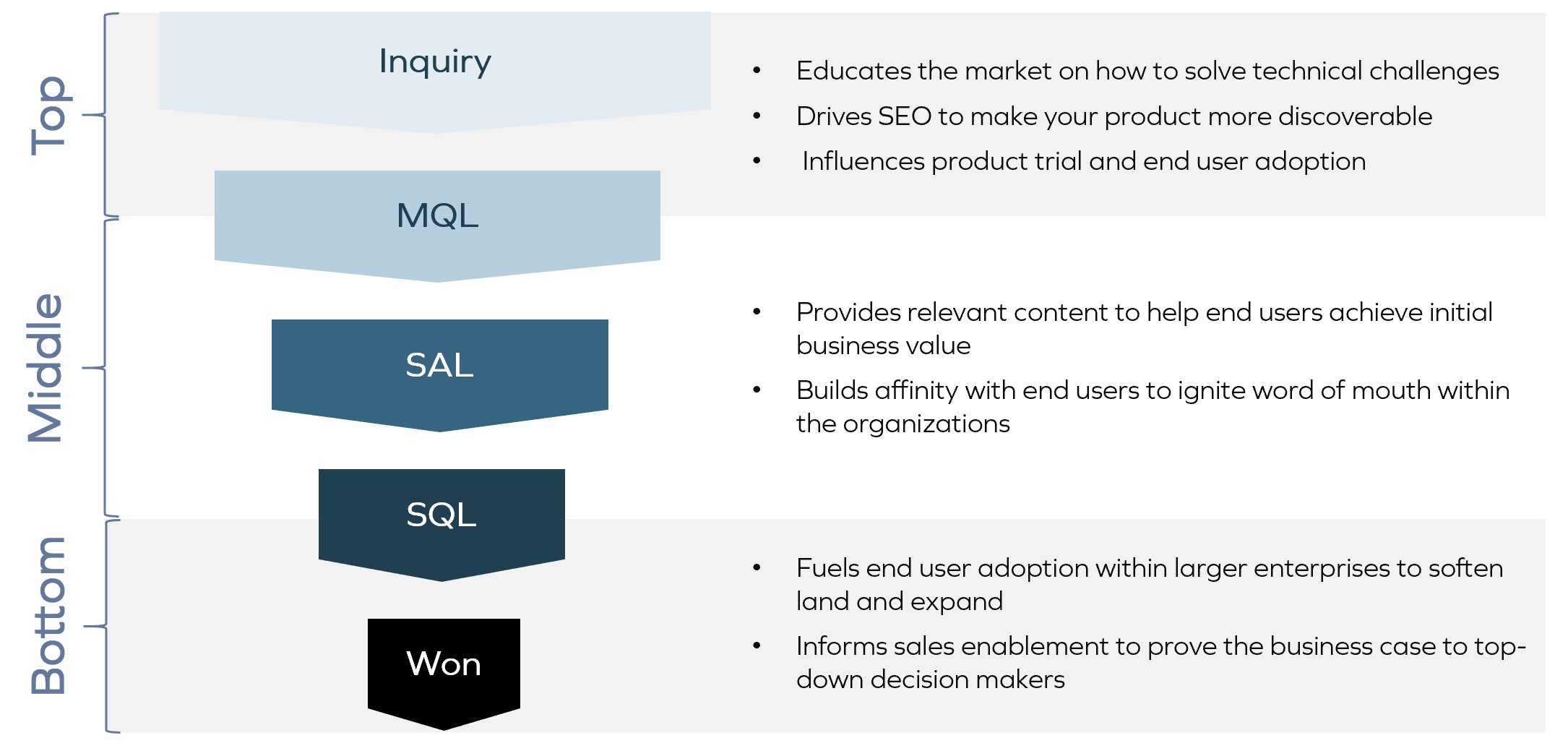Measuring the Impact of a Community-Led Growth Motion

This is a continuation of our previous post Building and Activating a Community-Driven Motion. If you haven’t already read it, we highly recommend reading that post before this one.
When evaluating whether a ScaleUp company should launch a community, the number one question we get from founders and C-suite executives is, “How do we measure the impact of community?” As we covered in our previous post, community is an organization-wide go-to-market (GTM) initiative that will accrete value across marketing, product, customer success, and sales. An increasing number of high-growth SaaS companies (Postman, Mural, Dremio, Bitrise and Apollo to name a few) have community embedded into the DNA of their organizations and can successfully measure the impact of community efforts across their go-to-market motion.
It bears repeating, companies that invest in community have access to a wealth of firmographic, behavioral, and technographic data points about their end-users. By investing in systems and processes to capture these insights and leverage them across your GTM processes, your company will be set up to confidently invest resources to accelerate the impact of your community efforts.
Gaining Visibility into Your Community
Community has traditionally acted as a black box of sorts with key engagement data across multiple venues (e.g., website, forums, GitHub, emails, events) siloed within the relevant software providers (e.g., Google Analytics, Slack, Discourse, Zoom, etc.), or even worse, tracked manually on spreadsheets. This worked in the old days when community acted as more of a support function for end-users and customers alike.
Community has since risen in prominence as a major organizational sales initiative: in our most recent survey of Insight's portfolio of ScaleUp companies, 55% are planning on testing a community strategy in the next year. An increasing number of SaaS companies, especially those with developer-focused, self-serve motions, have prioritized programs to build credibility with their end-users. Investing in community benefits GTM processes in many ways, including powering an organic flywheel of adoption, improving new user acquisition efficiency, and softening lands with larger enterprise accounts, to name a few. Organizations that are successful must have visibility into the two primary drivers of growth for the community:
- The members of the community and their level of influence
- The points of engagement and the relative scale of value for the organization
These are foundational for your team to deploy programs that successfully activate your community to create value for your organization. Fortunately, there has been significant growth in the number of tools available that can help you establish frameworks and tie these data sources together to gain the necessary visibility.
Mapping: Introducing the Orbit Model
It is admittedly still early days for community operations and reporting tools. Depending on your organization’s needs, there are a number of different software solutions, including Commsor and Common Room; each has a slightly different lens on mapping and reporting. The model that has emerged as popular with developer-focused, SaaS companies is the Orbit model. This is due to the fact that the team at Orbit has built a tool to visualize and quantify developer communities based on its strong roots in open-source, GitHub, and developer relations.
The Orbit model provides a clear map of how both your current and potential community members engage with your organization. Your company is at the center of the Orbit model while the different members circle around it at different levels.

The total value of your community is called Gravity: a measure of your community’s ability to acquire new members and keep current ones actively engaged. The Gravity score is calculated by multiplying two other metrics, Affinity and Influence.
Affinity (aka Love) is a member’s level of engagement with the community. This can be measured by collecting data against the key activities that create value for your community. For example:
- Attended the user conference
- Hosted a virtual event
- Contributed technical documentation
- Engaged in the community forum
Influence (aka Reach) is a measure of each community member’s sphere of influence based on their reputation, credibility, and the size and quality of their audience. Members with high influence will work on the community’s behalf to both attract new members and nurture Affinity with existing members. Examples of how to measure influence include:
- Job title/company
- Number of Twitter followers
- Thought leadership contributions
- Created relevant open-source projects
Measurement: Scoring and Calculating Gravity
The community team will want to define the relevant data inputs to measure both metrics. Fortunately, the software solutions highlighted above can facilitate the collection of these member events through both native integrations and tools such as Zapier.
Once you have your Orbit set up, your community team will want to determine the weight of the activities that make up each dimension. Like any scoring model, the weights assigned should be correlated to the value created for your organization. Don’t set it and forget it though: community scoring models should be reevaluated at least quarterly to ensure continued accuracy as priorities can change rapidly.

Both Affinity and Influence scores are calculated on the member level. For Affinity, the team will assign weights to each individual activity, time decay them appropriately (an engagement that happened 3 months ago shouldn’t carry the same weight as an event from last week), and then sum them up. Influence is more straightforward in its calculations (static numbers that are simply totaled); however, the inputs that are most relevant to your organization are more challenging to determine and collect since they can be more qualitative.
Once the team has successfully set up the scoring model and data collection, multiply for each member: Affinity x Influence = Gravity. Then total up the Gravity scores to gain a holistic picture of the total community Gravity score, as shown below. This is the primary metric that the community team should be measuring against overtime to best communicate the impact on value creation.

Many companies (60%) simply look at community size growth, which is important but lacks a holistic view of the value of the community. The Gravity scoring model provides a more accurate picture since it incorporates both member engagement and influence into the calculus.
Segmenting: Maximizes the Impact of Engagement Programs
Once the Gravity scoring infrastructure has been established, the next step is to segment the community into different levels to design and tailor optimal programs. The goal is to drive up the Affinity score over time to move more members into the next Orbit level. Each level will then qualify for increased visibility within the community and more exclusive perks.

Your community team can create as many segments as necessary, but we have included a recommended segmentation below with suggested programs for each level.
- Level 1 – Advocates – Affinity Score: 25+
The inner circle. The thought leaders who influence the rest of the community. It’s important to establish a personal and transparent relationship.
Engagement programs to consider include: private betas, user conference keynotes, thought leadership contribution
- Level 2 – Contributors – Affinity Score: 15-25
Community experts who are proactively leading the conversation by moderating forums and giving talks. It’s critical to invest in and recognize contributors for their efforts
Engagement programs to consider include: private Slack group, user conference moderation, hosting webinars, company swag
- Level 3 – Participants – Affinity Score: 5-15
Participants who are just starting to establish a track record by posting, writing documentation, or attending a webinar.
Engagement programs to consider include: user forum registration, virtual event participation documentation collaboration, hackathons
- Level 4 – Observers – Affinity Score: < 5
The outer circle. Observers may have consumed blog posts, watched videos, engaged on Twitter, or even tried the product. However, they have not fully activated community members yet.
Engagement programs to consider include: technical resources, content, Email newsletters
By segmenting your community, your organization not only gains visibility into the value of each member but can shape more targeted and effective tactics to drive growth.
Applying a Community Lens to Business Value
Now that our organization has established the foundations of data collection and achieved visibility into the community’s value, the final challenge is to apply a community-focused lens through which to view the company’s growth.
The Community Influenced Funnel
Tom Wentworth, Chief Marketing Officer at Insight portfolio company Recorded Future, published a blog post about the Attribution Hunger Games. He writes:
“There’s no attribution product on the planet that can solve for the way that real people at real companies buy. It’s just not a direct response process anymore. And I’ve seen this go horribly wrong before where it turns into a hunger game situation where you’ve got executives fighting with each other, for credit fighting to get resources from the organization.”
To Tom’s point, community should not be considered a 1:1 match between community engagement and pipeline created: it is additive to traditional go-to-market activities. If your community team is goaled against MQLs and revenue to community, the organization is setting up the initiative for failure. Rather, the organization will want to understand and measure against the ways that community is influencing the different funnel stages.

As outlined above, a good number of these benefits are more qualitative in nature, and progress should be documented and communicated internally; however, there are clear quantifiable metrics that the community team can be goaled against. These will depend on the strategic objectives that your organization is trying to achieve with community, as well as the systems in place to provide visibility into the relevant metrics.
Performance KPIs to Consider
Your organization’s ability to report on relevant KPIs will evolve in sophistication as the community grows. Remember that community is additive and should not be considered a separate sourcing engine for business value $. The reality is that even companies with more mature community motions are actively working to figure out the revenue impact of their initiatives. Ina recent survey of Insight Portfolio companies, only 27% measure community-influenced pipeline while the majority are focused on growth in members (60%) and engagement (53%). Fortunately, the gravity score in the Orbit model successfully captures both of those dimensions.

All community teams should be KPIed on member growth and Gravity score growth. These are table stakes. Your organization should take the following into consideration when selecting KPIs:
- If your community has public-facing components on your website (e.g., forums, documentation, content), the community team should work with demand gen to measure the SEO impact.
- For companies that have self-serve motions, investments in community should influence active user growth through word of mouth and referrals.
- While community-influenced pipeline $ is ideal, it may not be feasible. Many companies will have inherent challenges in tracking community-influenced pipeline: how personal member registration information (e.g., Gmail, GitHub) is collected and tying those members back to a prospect/customer. This is especially true for communities for products that were developed out of open-source software.
- If your community is focused on customers, the community team will want to work closely with customer success/support to measure the difference in both retention and NPS metrics between those customers who are engaged in the community and those who aren’t. Additionally, technical documentation and forum posts should help reduce ticket backlog, as well as impact other relevant support metrics.
Account-Based Community Reporting
If your organization can tie community members back to target accounts, the team can build dashboards to measure the role of community in the enterprise selling motion. While Orbit supports data pass-through to Salesforce with Zapier, some portfolio companies store all of their data in a data warehouse, such as Snowflake, and then leverage BI tools such as Looker to create customized views.

This is a powerful tool to understand what end-user adoption looks like within a target account to map out existing account penetration and where white space exists. By gaining visibility into the target account’s community members, sales can speak more intelligently about the business impact and use cases to key decision-makers.
Summary
In terms of growth levers for ScaleUp SaaS companies, Community is undeniably the new cool kid on the block; however, it is still in the early days of maturity. Similar to other motions like Account-based (ABX) and Product-led growth (PLG), we anticipate significant growth in adoption, testing, and iteration by our portfolio companies in the coming months and years.
We hope that these posts will provide your organization with clarity on how to successfully build, activate and measure your community-driven motion to power growth.











